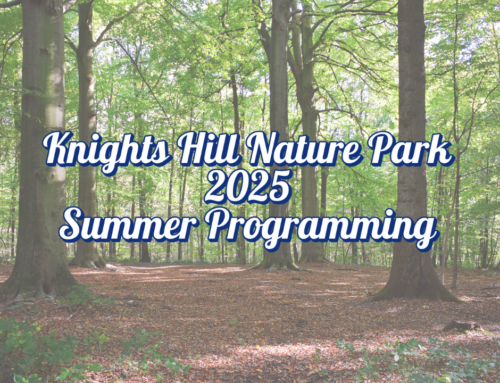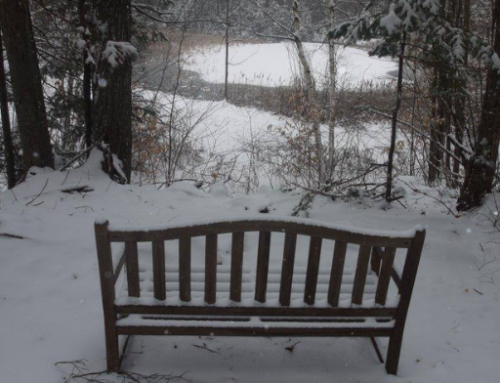Events
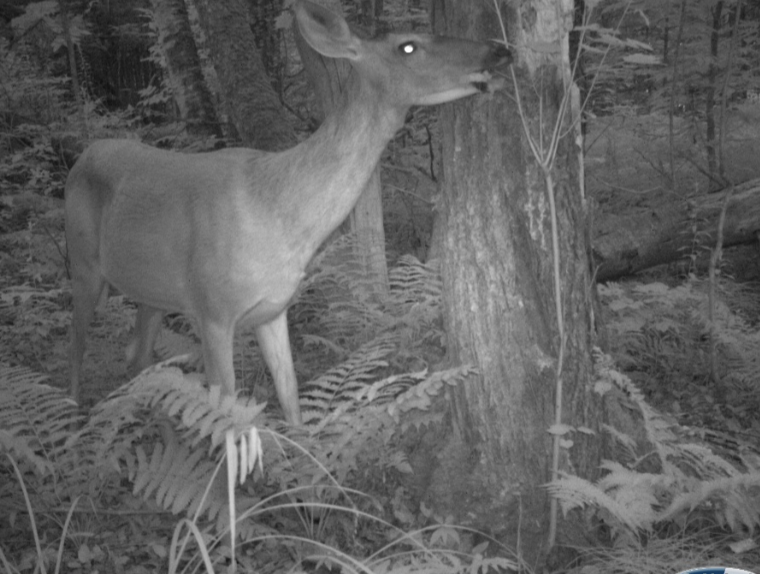
July 22, 2025
Trail Cameras & Hidden Visitors: A Summer at Knights Hill Nature Park
Hello, my name is Owen MacQueen. I’m a Junior at Colby-Sawyer College, coming from Concord Massachusetts over by Boston, and have been monitoring Knight’s Hill Nature Park for The Outing Club for some extra as an internship over this summer for my major in Environmental Science.
Alongside giving general tours, surveys, and observations on local wildlife I’ve been seeing, I’ve also been keeping an eye out for wildlife that typically can’t be seen by people, as they often run away before you have a chance to spot them. After becoming familiar with this park, I set up two trail cameras in key spots that looked promising for visiting wildlife. The first was placed directly behind the farm pond, in a small clearing with dense trees on all sides. The idea was it would be a likely spot that any large animal looking for water would pass through to drink. Over the next two weeks, the camera captured three different species.
The first was the American Black Bear, which I also saw one while crossing Parkside Road, which runs alongside this park. I’m not sure if this is the same one. I heard someone else on the side of the road comment that the bear was tagged. I don’t see a tag on this one, but it may be on the other side of its body.
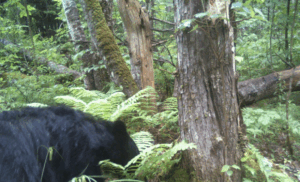
American Black Bear at Knights Hill Nature Park.
The bear’s fur looks sparse and matted. It may have just gone for a wade in the pond. It probably looks thicker and fluffier during the winter months.
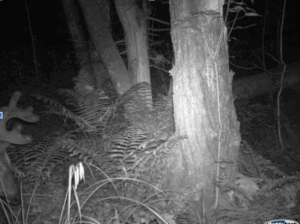
White-tailed deer buck.
I also spotted a photo of a white tailed deer buck that was just starting to grow a new set of antlers (see image above).
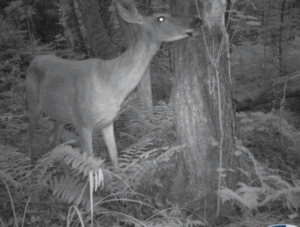
Doe spotted at Knights Hill Nature Park.
There was also a doe with its mouth open chewing on a stripped maple sapling (see above).
And finally, I got a photo of an elusive Coyote (see below). This one seemed to have a very healthy uniform coat of fur. Many of the foxes and coyotes around here seem to have gotten sick with mange, which matts up their fur, and can cause them to freeze to death in the winter.
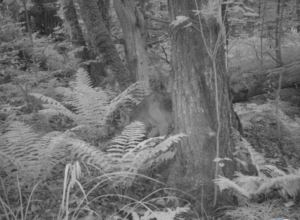
Coyote captured by trail camera.
The pond camera captured a greater diversity of wildlife, showing the many animals that routinely visit the pond for a drink. However, the camera was only able to capture a small area of space around the pond, and there were likely many other large animals that came for a drink which the camera missed.
The second camera was placed more out in the open, in an understory of white pines. There were many deer scrapes in the area, so I expected to capture many deer photos. And that was all I captured. To my understanding, pine forests are not as popular of a wildlife hotspot compared to the neighboring beech stands, oaks, and maples.
###

